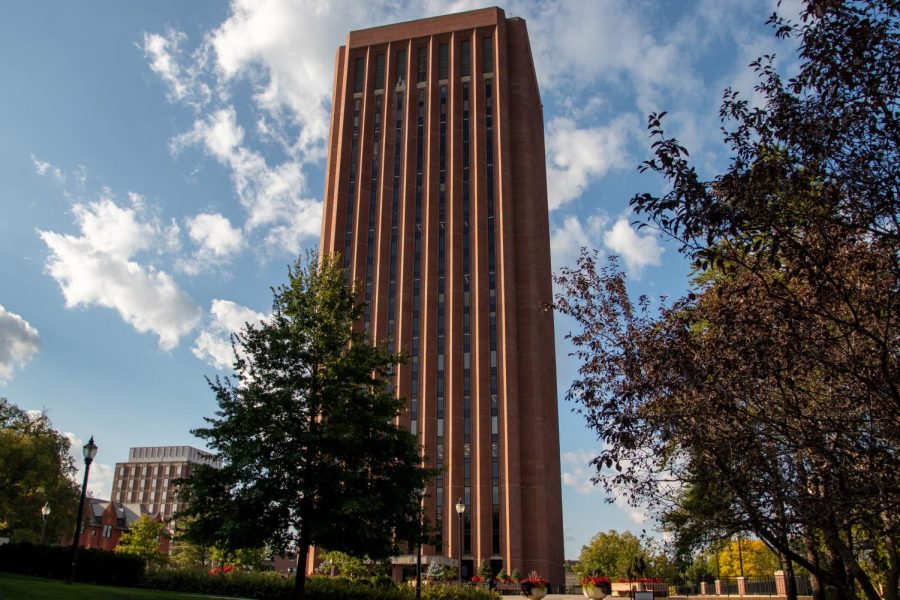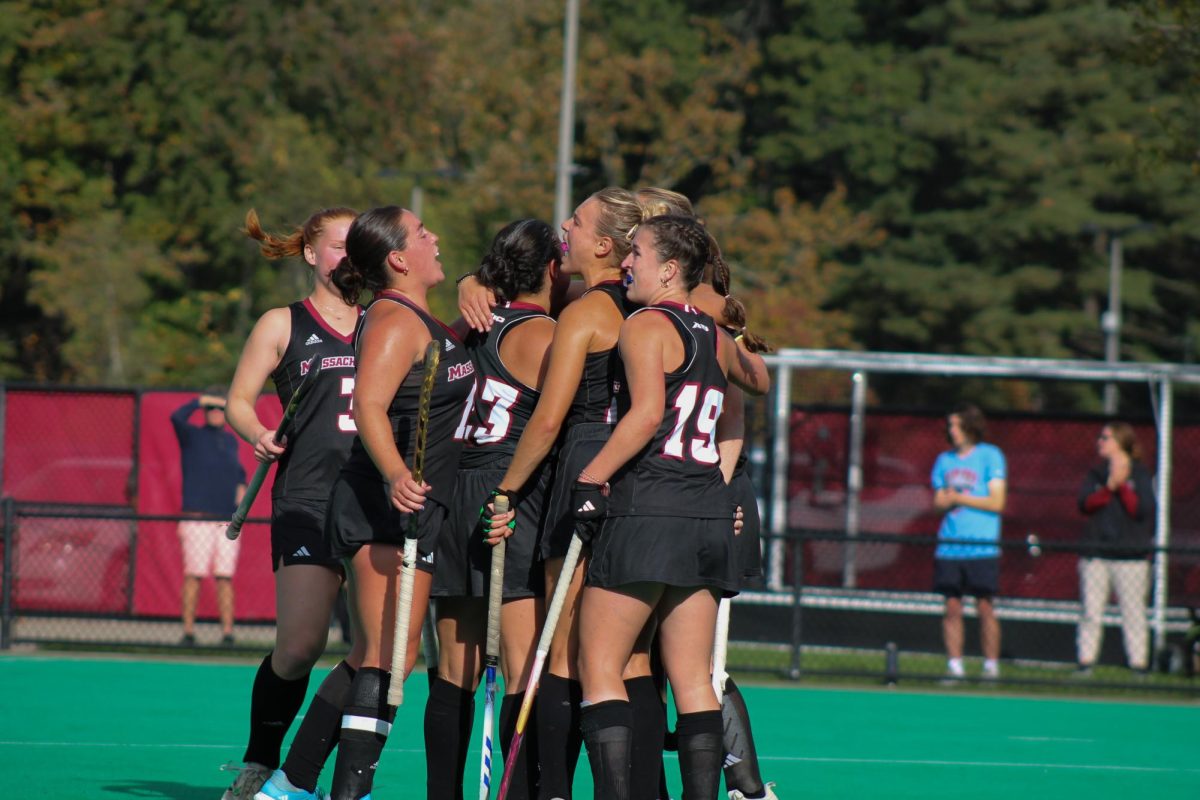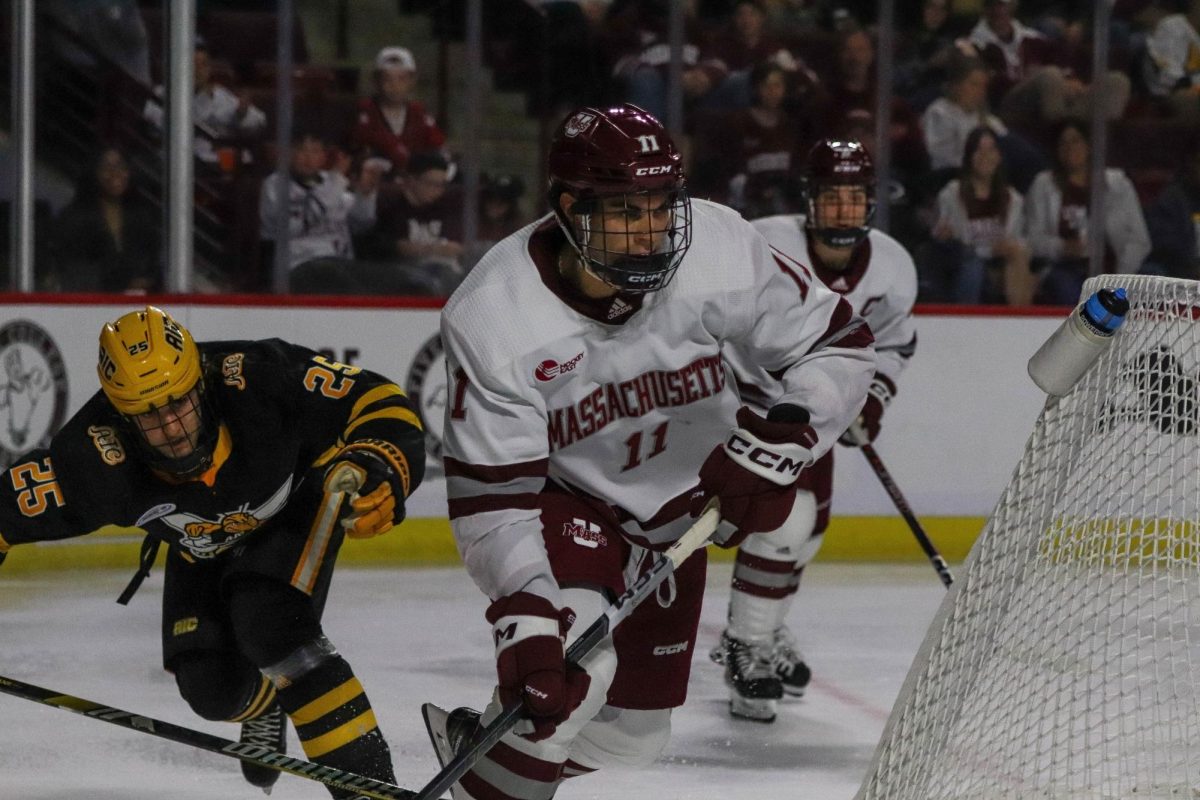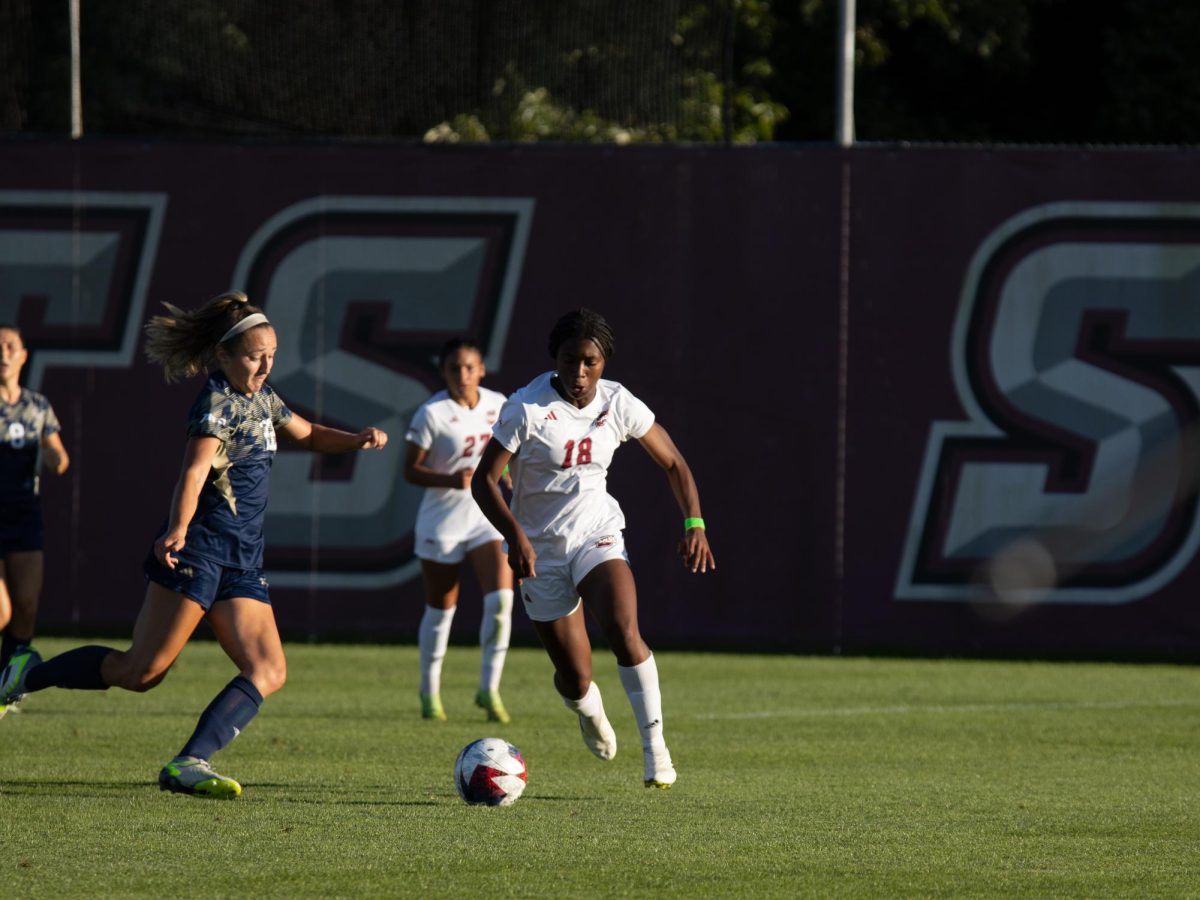As colleges near the end of the fall semester — the first one in recent history shaped entirely by a pandemic — a Daily Collegian analysis of Massachusetts schools’ COVID-19 cases shows how effectively each institution has mitigated the spread of the deadly virus.
The University of Massachusetts ranked third highest in the state with positive cases per 1,000 students, among schools that specified such data, the Daily Collegian found. Boston College and Northeastern University, respectively, have seen the highest number of cases proportional to the size of their student bodies.
UMass alone has reported 196 cases since the beginning of November — 53 percent of the school’s total cases in the past three months. On Wednesday, the University reported 24 cases — the second-highest single-day increase yet — followed by 20 additional cases Thursday.
UMass has the second highest total number of COVID-19 cases of any school in the state, with 374 cases since asymptomatic testing began in early August. Only Boston University has reported more cases, with 388 total cases. Both schools are among the largest in the state.
Despite varying methods used to prevent the spread, there has been no one-size-fits-all solution to mitigating the spread of coronavirus at colleges in Massachusetts.
Some schools have taken strict measures to prevent the deadly virus from spreading, while others have struggled to discourage students from partaking in risky behavior. After an off-campus party caused a spike in cases at UMass, school officials opted to refrain from immediate harsh punishments to encourage contact tracing. Other schools, such as Northeastern University, suspended several students who broke dorm capacity restrictions.
“While cases are increasing, our quick response to positive tests through contact tracing, and the cooperation of students in the area, is very helpful,” said Ed Blaguszewski, a University spokesman, in an email. Still, some students have faced potential sanctions for breaking health guidelines.
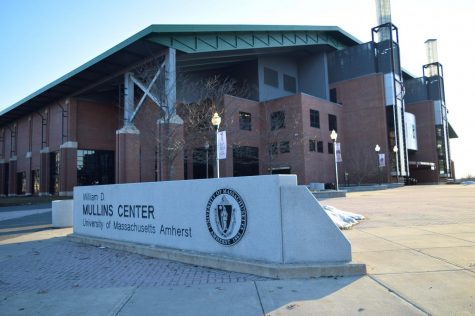
Many colleges, for various reasons, have limited testing capacity and conduct random testing, suggesting that their numbers may be higher than reported. Even some with ample testing capacity, such as UMass, do not require off-campus students to get tested, despite the vast majority of cases being detected in those students.
Most schools maintain testing dashboards, which are updated with the latest COVID-19 data. The information provided also varies from school to school.
UMass is one of several schools that does not list active COVID-19 cases in the community, though Blaguszewski said over a month ago that an active cases dashboard was “in the process” of being posted. There were 80 active cases in the UMass community as of last week, according to Blaguszewski.
Unlike the first spike in early October, UMass has not sent out any messages to the community explicitly acknowledging the current spike in cases.
“We sent out a broadcast email on [Nov. 12], which is also posted on the COVID-19 site,” Blaguszewski said when asked if the University has plans to inform the community of the recent uptick in cases.
However, there is no mention of current positive cases in the school community in the broadcast email. Instead, the email outlines recommendations to get tested before Thanksgiving and winter break, and praises students and faculty “for their efforts to follow public health measures.”
To compare UMass to other colleges in Massachusetts, data was organized into three sections: large schools, with total student populations over 5,800; local schools, which includes colleges in Western Massachusetts; and state schools in Massachusetts. UMass, which falls under all these labels, was individually compared to other schools in each category.
All schools in Massachusetts with COVID-19 dashboards were analyzed for this report. When categorized, several schools were not included because they did not fit the criteria for each category.
Since most schools that list student positive cases do not specify between undergraduate and graduate students, the total population of students at the schools were used for the cases per 1,000 students data analysis.
Therefore, schools with large graduate student populations — who often do not make up the majority of positive cases — may have a lower rate than if undergraduates were the only group factored in. Many students also haven chosen to learn remotely at home, so they likely aren’t tested at campus.
The Daily Collegian analyzed data, collected on Wednesday, Nov. 18, from the colleges that keep an updated dashboard of COVID-19 cases and testing. Cases have risen at most schools in days since.
To jump to a specific section, click the link below:
Noteworthy situations at other schools
Cases / 1,000 students
Though cases at large universities are much higher than those at smaller ones, a look at the positive cases per 1,000 total students may provide the most insight into how a school’s COVID-19 response compares to others. However, if all schools had proportional testing rates, this statistic may be more representative.
To find this, the total number of students at a school was divided by 1,000. Then, the number of total positive cases in students was divided by the quotient.
For example, UMass has 31,642 undergraduate and graduate students (31,642 / 1,000 = 31.642). There have been 320 positive cases in students at the University (320 / 31.642 = 10.11). Therefore, there have been about 10 positive cases per 1,000 students.
Boston College, with 21 cases per 1,000 students, has had the most trouble mitigating the spread of COVID-19 at the school. Over Labor Day weekend alone, 73 students tested positive for the virus, according to the Huntington News.
Northeastern, with 14 cases per 1,000 students, ranks second among the schools. Reports of positive cases have remained relatively steady throughout the semester, but the school has reported 68 cases in the past week.
UMass has seen 10 cases per 1,000 students throughout the semester, ranking third amongst the schools. An outbreak in late September contributed a few dozen cases, and the University has seen a sharp rise in cases throughout November.
Note: Boston College only listed undergraduate student cases, not graduate student cases. Harvard University was the only school to explicitly list both undergraduate and graduate cases.
Other schools solely listed “students” as a category. Hampshire College and Amherst College do not have graduate programs, so undergraduate students were assumed to be all “students.”
Compared to the 13 other large schools in the state, UMass had the second highest number of COVID-19 cases. Cases spiked for a second time throughout November, a month after the school’s first significant spike.
The sudden uptick in cases could be attributed to several factors, including an increase in social activity during Halloween weekend, social gatherings following the presidential election and an upward trend of cases in the state, Blaguszewski said.
“The increase in UMass cases reflect, our public health officials believe, the general increase in COVID cases occurring throughout the Commonwealth,” Blaguszewski said in an email.
However, cases in Massachusetts have been on the rise for over a month, and the most recent spike at UMass came in early November. On the University’s dashboard, a distinct bell curve is seen around the first week of October before cases slow down prior to November — a stark contrast to the state’s gradual rise as new cases continue to be reported.
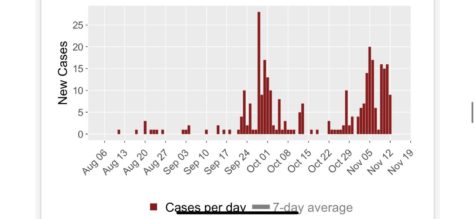

Boston University has reported 355 positive cases, the most of the large schools. Boston College and Northeastern University have reported the next highest behind UMass, with 284 and 262, respectively.
UMass ranks sixth in tests completed among the large schools. The University has completed 145,637 tests since implementing asymptomatic testing on Aug. 6. Harvard University and MIT have each completed just over 200,000 tests. Northeastern and BU have completed the most with 407,118 tests and 397,357 tests, respectively.
When looking at a school’s cases, an important factor is the campus environment and tests completed. For instance, Northeastern and BU are in a densely populated city. Both have also conducted more than three times the number of tests than UMass, while having slightly smaller undergraduate populations.
Despite these factors, as well as employing harsher punishments for students who break restrictions, Northeastern and BU have a similar number of total COVID-19 cases to UMass.
At UMass, the only students required to receive tests are those living on campus, who account for 22 positive cases, and those who use on-campus facilities. Students who live off campus are encouraged to get tested, which is free of cost, twice a week as outlined in the community agreement.
When UMass announced its plan in late October to invite all first-year and transfer students back to campus in the spring, only one student who lives on campus had tested positive, according to UMass’ COVID-19 Dashboard.
Campus is expected to be at around 60 percent residential capacity in spring, or 8,700 people, according to Blaguszewski. Maximum residential capacity is 14,500 people. There are 6,115 first-year and transfer students, all of whom were invited to campus, as well as students with mandatory face-to-face classes.
Compared to eight other colleges in the surrounding area, the University has reported a significantly larger number of positive cases in the community.
However, much of this can possibly be attributed to the size of the student population at UMass — there are over 31,000 students at UMass, with the next largest student population being 5,810 at Westfield State University.
Westfield State, following a recent outbreak of cases, has reported the next most with 118 cases, followed by Springfield College with 60 cases, Western New England University with 39 cases and Amherst College with 13 cases. Hampshire College, Mount Holyoke College, Elms College and Smith College have each reported fewer than 10 cases.
UMass has conducted by far the most tests of the local colleges with over 145,000 tests completed — nearly tripling Amherst College, the runner-up, which has tested 52,829 people.
All other local colleges have completed under 20,000 tests in total, highlighting the difficulty for many smaller, private schools to secure adequate testing supplies.
Of all state schools in Massachusetts, UMass has recorded the most coronavirus cases, nearly tripling the next closest school. Westfield State — which has a student population of just over 5,800 — has reported 118 cases, the second highest.
UMass Dartmouth has reported the third highest case count with 80, followed by Bridgewater State with 55 cases, Worcester State with 42 cases, Framingham State and Salem State each with 31 cases and Fitchburg State with 28 cases.
UMass Boston and UMass Lowell, the only state schools besides UMass with a student population over 16,000, have reported just 15 cases and 13 cases, respectively. This may be attributed to the limited campus housing or the lack of testing completed at both schools.
At UMass Boston, all students and staff living and working on campus, or attending face-to-face classes, are required to be tested weekly. At UMass Lowell, all students living on campus and a select group of commuter students, faculty and staff are tested weekly.
Community colleges were not included in the analysis, since most don’t keep COVID-19 dashboards or have any students on campus.
With over 145,000 tests completed, UMass also has completed by far the most testing of state schools. The next closest is UMass Dartmouth with 17,224 tests, followed by Worcester State with 17,198 tests, and UMass Lowell and Bridgewater State each with just over 12,000 tests.
UMass Lowell, Westfield State, Fitchburg State, Framingham State, Salem State and UMass Boston have each completed under 10,000 tests.
Let’s look at the how the schools with the most cases per 1,000 undergraduate students have enacted COVID-19 policies and responded to outbreaks:
1. Boston College (21 cases/1,000 students)
It is unclear if any students have been punished for breaking COVID-19 protocols, but one student who was in quarantine in early October was told by a school employee that he would face “serious consequences” if he broke quarantine, according to the BC Heights.
The student, according to the newspaper, had broken quarantine to evacuate the building during a mandatory fire drill and to receive his second COVID-19 test.
2. Northeastern University (14 cases/1,000 students)
Northeastern has taken a strict stance on COVID-19 restrictions, swiftly suspending 11 freshmen after they were caught in a room not wearing masking or socially distancing.
The students who were suspended did not receive their tuition back from the university. After pushback, however, the university said that some of the money lost — about $36,500 — could be applied to future payments.
3. UMass Amherst (10 cases/1,000 students)
UMass has taken a lenient approach to punishing students who violate COVID-19 restrictions. The University, unlike other major schools in the state, have emphasized working with the students, rather than immediately punishing them, to improve contact tracing.
In early October, school officials announced that nearly 200 students were facing potential sanctions, including a “notable” number who violated COVID-19 restrictions. School officials did not specify how many.
4. Western New England University (9 cases/1,000 students)
No student punishments have been reported at Western New England University.
However, according to the school’s reopening plan, students who host a party, on or off campus, that violates the state’s health guidelines will “face disciplinary action up to and including a suspension… and will be held responsible for any costs associated, including COVID-19 testing and quarantine costs.”
5. Tufts University (8 cases/1,000 students)
In mid-November, the number of coronavirus cases on the Medford/Somerville campus — which houses undergraduate students — has “increased substantially,” according to the school.
As a result, new guidelines were enacted, suggesting that students only leave their residence hall or off-campus apartment for essential activities, such as attending class, picking up food or seeking medical care.
There are no specific punishments outlined by the university, and no disciplinary actions have been reported.
6. Boston University (8 cases/1,000 students)
Boston University’s policy on COVID-19 punishments has been severe, suspending 12 students for the remainder of the fall semester after they broke a number of university and health guidelines in mid-October.
After an uptick in cases, Boston University lowered the cap of student gatherings from 25 people to 10 people and introduced new consequences for breaking restrictions in early November.
If students host or attend a gathering with more than 10 people, on or off campus, they will automatically be suspended for the entire academic year. Those students will also be forbidden from attending in-person and remote classes.
Student organizations, including sports teams, that host gatherings that break restrictions will be suspended and have their recognition withdrawn for the entire academic year.
Noteworthy situations at other schools
Massachusetts Institute of Technology
Since the beginning of November, MIT has had 99 positive cases, accounting for over half of the research university’s 186 cases since testing began in mid-August.
When asked how many of these cases were found within undergraduates, who comprise 4,530 of the school’s 11,520 students, a school spokesman would not specify because of “privacy concerns given the small number of students on campus.”
“Individuals are tested once or twice a week depending on the frequency of when they come to campus,” spokesman David Tytell said in an email. “Because people’s schedules vary, the number of tests we perform any given week fluctuates greatly.”
Punishments for breaking COVID-19 guidelines range from the restriction of campus facilities to being suspended, but no punishments have been reported so far.
Merrimack College
Merrimack College, a school with just over 4,600 students, has reported 167 positive cases, according to The Beacon, the school’s student newspaper. As a result of the rise in cases, Merrimack College shifted to remote learning in late September.
No punishments have been reported among those who tested positive.
Springfield College
Following a spike in cases in late October, Springfield College ordered a temporary shelter-in-place that was lifted Nov. 9, according to the Springfield Student. A residence hall remained in quarantine for an additional day, and classes were moved online for the remainder of the semester.
No student punishments at the college have been reported.
Westfield State University
As a response to a recent outbreak at the school, Westfield State is moving all classes online for the remainder of the semester and beginning a controlled move-out of residence halls, according to NECN.
No student punishments have been reported.
Collegian Reporter Will Katcher contributed to this article.
Matt Berg can be reached at [email protected]. Follow him on Twitter @mattberg33.

